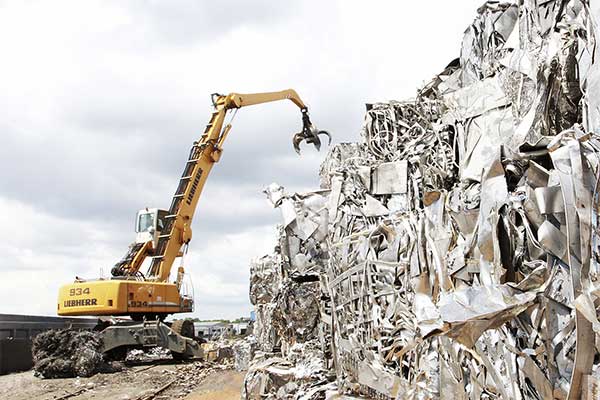- The researchers calculated the greenhouse gas balance of recycling stainless steel from a defined project at German sites.
- The results show massive greenhouse gas disruption.
- They say the findings could form a basis for political decisions and strategic planning.
Stainless steel recycling is considered a sustainable way to save CO2 in the globally growing steel production. As early as 2010, Fraunhofer UMSICHT researchers determined a savings potential of more than 4.5 t CO2 per ton of blend on behalf of the Oryx Stainless Group.
More recent calculations by the UMSICHT team even come to savings of over 6.7 t CO2 -eq. per ton of blend for the reference year 2021.
The results show that recycling stainless steel scrap has great potential to reduce greenhouse gases.
As the demand for stainless steel continues to rise, responsible and efficient use of limited global resources is becoming increasingly important.
One option for steelmakers to save greenhouse gases is to produce new stainless steel from high-quality secondary raw material blends instead of primary raw materials.
Secondary raw materials are upgraded by combining differently alloyed stainless steel scrap to produce blends. These blends being in accordance with the technical specifications needed are used in steel mills as the main inputs in an electric arc furnace (EAF) process. To a small extent, ferroalloys can be used for analytical fine-tuning.
Greater CO2 savings after update of the greenhouse gas balance
In the project, the UMSICHT researchers have now calculated the greenhouse gas balance of the recycling of stainless steel from the Oryx Stainless Group at the Dordrecht and Mülheim an der Ruhr sites—analogous to the study structure of 2010—for the reference year 2021.
The results show that the greenhouse gas savings continued to increase compared with the calculation at that time. A corresponding study for the site in Thailand is in progress at UMSICHT.
Total savings by the Oryx Stainless Group at the two sites in 2021 amount to around 3,015,000 t CO2 -eq.—approximately one million metric tons CO2-eq. more than in 2009 (2,026,000 t CO2-eq.). One reason is the comparatively higher output volume. The average weighted savings have also increased to 6.7 t CO2-eq./t blend in 2021. Thus, the results also retroactively show larger savings for the year 2009.
“In order to be able to compare the values meaningfully and reliably with our earlier calculations, we have also recalculated the data for 2009 again with our new model,” explains Dr.-Ing. Daniel Maga, Group Manager Sustainability Assessment at Fraunhofer UMSICHT. “Among other things, the most recent data sets for the raw materials of primary steel production show a higher carbon footprint and the current electricity mix for 2020 shows a lower CO2 footprint.”
Continuously developing stainless steel production
To compute the overall results, the researchers first calculated the total greenhouse gas savings from substituting primary material in the electric arc furnace (EAF) process. In a second step, they considered the entire Oryx process chain for the sites in Mülheim an der Ruhr and Dordrecht, from collection to production of the finished blends to their transport to the customers.
“The results help us to quantify and communicate the benefits of stainless steel production from blends,” emphasizes Tobias Kämmer, Chief Executive Officer (CEO) of the Oryx Stainless Group. “The findings also form a basis for political decisions and strategic planning.”
—
This article has been adapted from source material published by Fraunhofer-Gesellschaft.









Comments